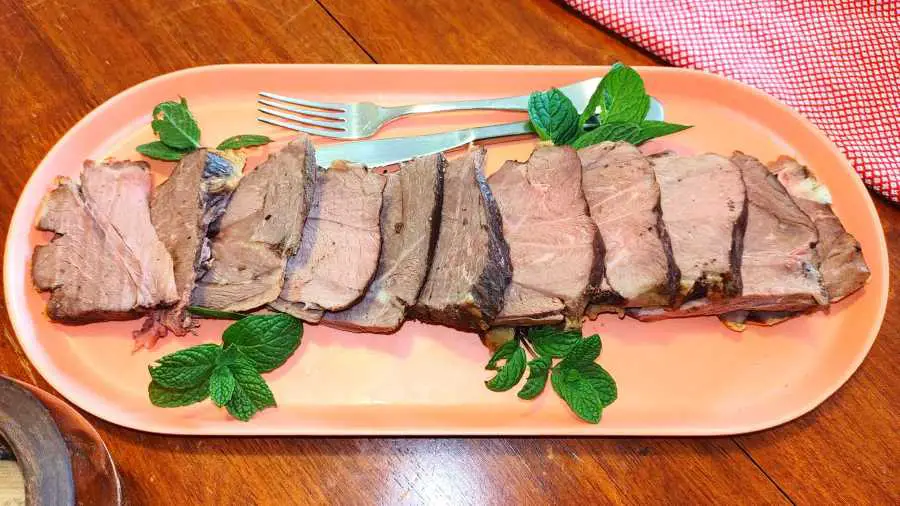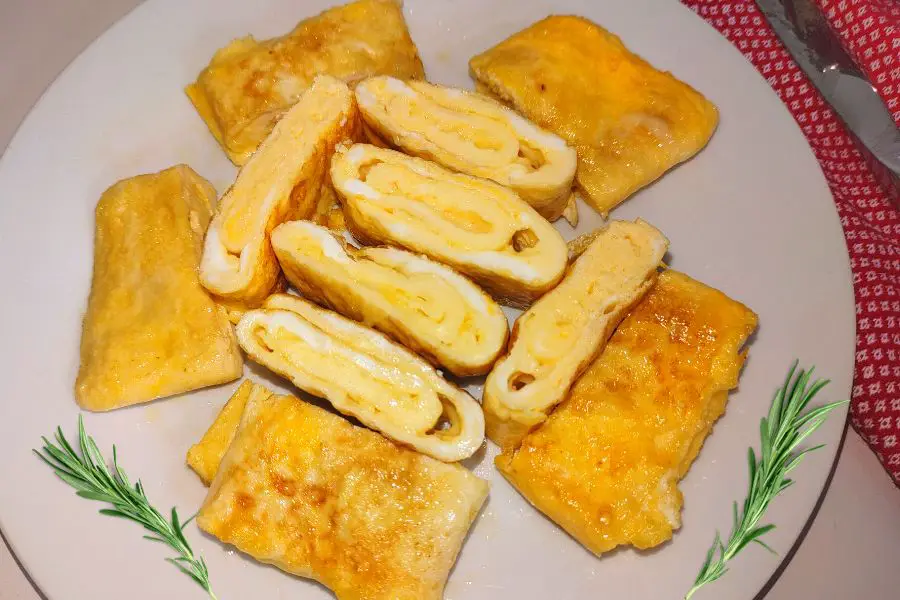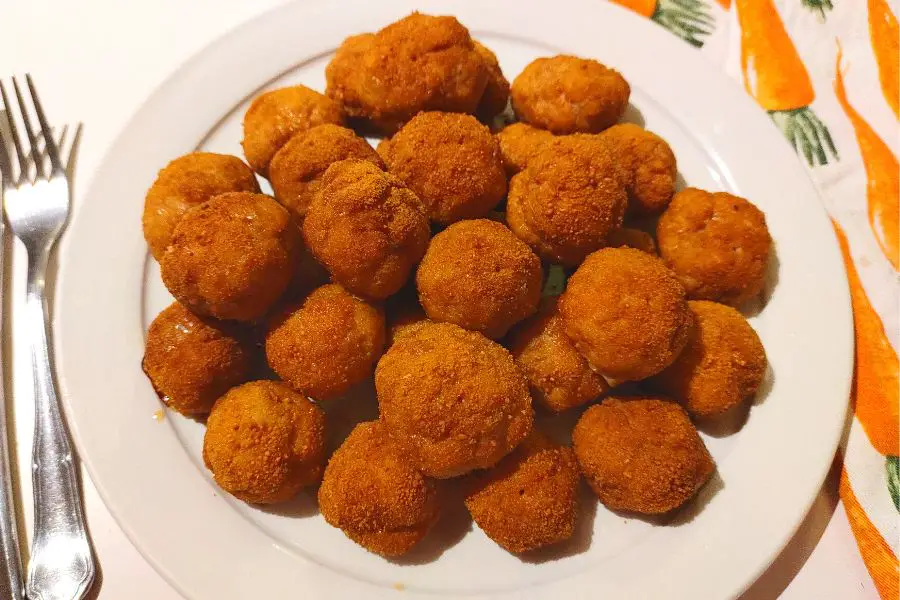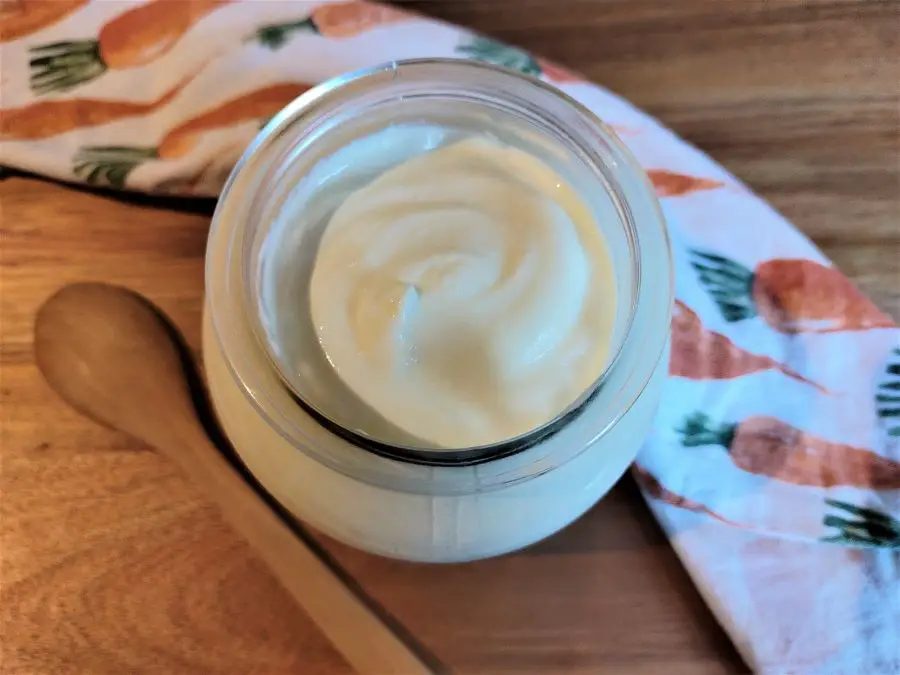This is an easy fool-proof lamb leg roast recipe that takes very little preparation and even if you’ve never roasted a lamb leg before, it’s very hard to get it wrong.
Let’s first look at why lamb is one of the best carnivore foods you can eat.
Why lamb is a great choice on the carnivore diet
1. Lamb is mostly grass-fed
If you get lamb imported from New Zealand, you can be sure that it is 100% grass-fed. Due to the plenty of open wide space available, New Zealand lamb is raised in the open pasture and grazing on grass all its lives.
If you get lamb imported from Australia, it is most likely to be grass-fed with an estimated of only around 15% being grain-finished.
Further, unlike their American grain-finished counterpart where soy and corn feed is predominant, Australian lamb is fed grains combined with lupins or field peas, by-products of cottonseed or canola, and silage or hay.
As to American lamb, unless it is specifically labeled “grass-fed” and “pasture-raised”, it is most likely to have been grass-fed and grain-finished.
An animal that has been fed a species-appropriate diet and raised in a natural environment is likely to be healthier and happier and produces better quality and more flavorsome meat.
2. Lamb is fattier than beef
Lamb is generally fattier than beef and this can help you get enough fat on the carnivore diet.
As mentioned in this post, fat is really important on the carnivore diet. It is an important energy source and it helps with the absorption of essential fat-soluble vitamins. If you don’t eat enough fat, you are likely to feel unsatiated and may even experience constipation.
At the other end of the spectrum, eating too much lean meat and too little fat can even lead to protein poisoning or “the rabbit starvation syndrome”. This is because the liver has a limited capacity to deaminate proteins and produce urea for the excretion of excess nitrogen.
Because meat in the supermarket is generally quite lean due to its fat being trimmed off to suit consumer preferences, you do need to purposely look for meat cuts with visible fat on them, otherwise, you will need to buy extra fat trimmings to get enough fat on your diet.
Untrimmed lamb leg and lamb ribs are great options because they have plenty of fat on them.
3. Lamb has great flavor
Lamb is usually slaughtered at a young age (under 12 months old) and because of its high-fat content, it is very tender, juicy, and flavorful.
I find that lamb really doesn’t need any seasonings but you can always add a bit of herbs and spices if you wish and can tolerate.
4. Lamb is very nutritious
Like other ruminant meat, lamb is a great source of good quality protein and fat and is rich in many essential vitamins and minerals such as thiamin, riboflavin, niacin, vitamin B6, vitamin B12, phosphorus, zinc, iron, copper, and selenium.
It is also a good source of fats including omega 3 fatty acids. Its omega 3 to omega 6 ratio is around 2 which is very favorable compared to that of pork and chicken.
If you don’t eat a lot of oily fish, it’s all the more reason to add fatty lamb cuts regularly to your diet.
In addition, lamb is rich in bioactive compounds such as taurine, carnitine, conjugated linoleic acid, creatine and endogenous antioxidants.
Carnivore Lamb Leg Roast Recipe
Ingredients
- 3.5 lb leg of lamb (1.6 kg)
- 1 tsp salt
- Other optional seasonings:
- 1 tbs chopped fresh rosemary
- 1 tbs chopped fresh thyme leaves
- 4 minced garlic cloves
- 1 tsp pepper
- 2 tbs melted tallow or bacon grease.
Instructions
- Bring the lamb to room temperature by leaving it on the kitchen bench for 2 – 3 hours. This will ensure even cooking throughout
- Pre-heat oven to 375°F (190°C)
- In a small bowl, mix all seasonings of your choice
- Place lamb in a roasting dish. Use a sharp knife and score all over the top side of lamb before rubbing in the seasoning mixture thoroughly. Alternatively, you can also use a small paring knife to make about 15 incisions all over the top of the lamb and push seasonings into the incisions
- Roast lamb (fat side up) for 30 minutes to sear and brown the outside
- Remove lamb, cover with foil, and return to oven
- Reduce heat to 250°F (120°C) and roast for another 45 minutes
- Transfer lamb to a plate and let rest for 15 minutes before slicing. Keep the fat and juice in the roasting dish
- Use a carving fork to hold the lamb roast steady and slice it with a large sharp knife, always cut against the grain (the grain goes a long the bone). Drizzle the fat and juice over the top before serving.
This recipe will give you rare to medium-rare which I find tastes the best.
The internal temperature should be about 135°F (58°C) for rare and 150°F (65°C) for medium.
Roast lamb cooking times for different cuts
Below is the temperature guides by Australian Lamb for roasting different lamb cuts with different degrees of doneness:
- Preheat oven to the recommended temperature for your cut
- Follow the recommended roast lamb cooking times for your cut’s weight
- Check the internal temperature with a meat thermometer
- Remove roast before it reaches the final temperature as it continues to cook while resting (aim to remove roast when it is about 10°F or 5°C lower than the desired internal temperature shown below).
| Lamb cut | Oven temp. (no fan) | Rare 135°F (58°C) | Medium 150°F (65°C) | Well done 160°F (70°C) |
|---|---|---|---|---|
| Eye of loin/backstrap, lamb round, topside roasts, mini roast, lamb rump | 220°C (430°F) | 20 min per lb (450g) | 25 min per lb (450g) | 29 min per lb (450g) |
| Rack of lamb, four-rib roast, crown roast | 200°C (400°F) | 22 min per lb (450g) | 30 min per lb (450g) | 39 min per lb (450g) |
| Loin (boned and rolled) easy-carve leg or shoulder | 180°C (360°F) | 17 min per lb (450g) | 24 min per lb (450g) | 27 min per lb (450g) |
| Butterflied lamb leg | 180°C (360°F) | 11 min per lb (450g) | 14 min per lb (450g) | 16 min per lb (450g) |
| Butterflied lamb shoulder | 180°C (360°F) | 20 min per lb (450g) | 23 min per lb (450g) | 26 min per lb (450g) |
| Boneless lamb shoulder (Boned and rolled) | 180°C (360°F) | 17 min per lb (450g) | 24 min per lb (450g) | 28 min per lb (450g) |
Bring the lamb to room temperature, score and rub in seasonings of your choice
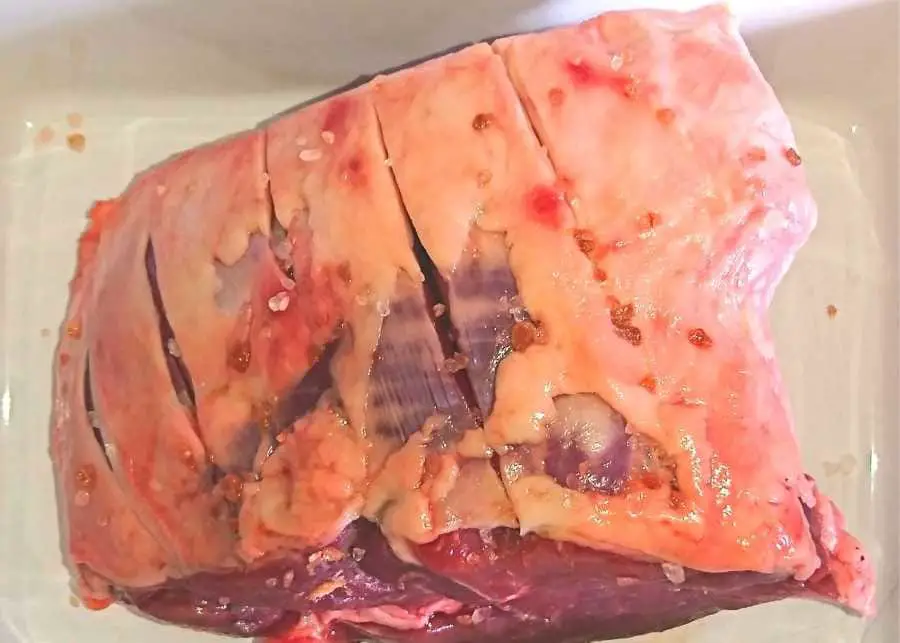
Start with high heat to sear and brown the outside a little which will add flavor to the roast
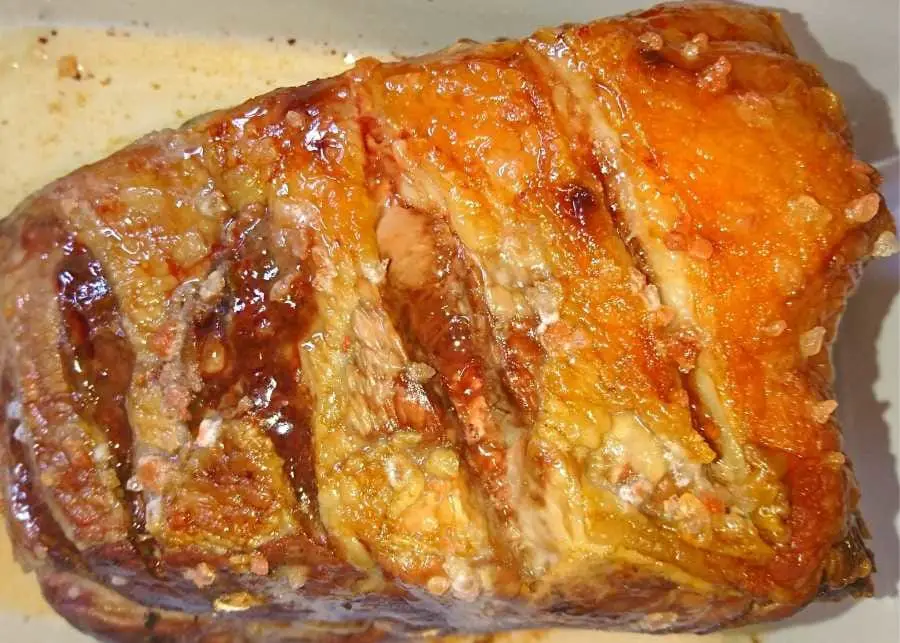
Wrap with foil, return to the oven and reduce heat for the remaining of the cooking time
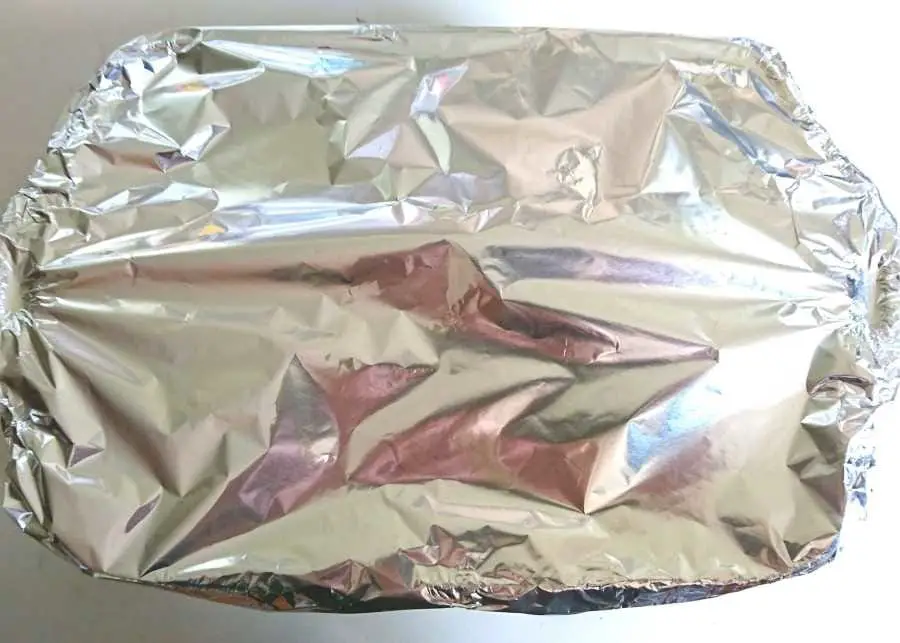
Rare to medium rare is the best
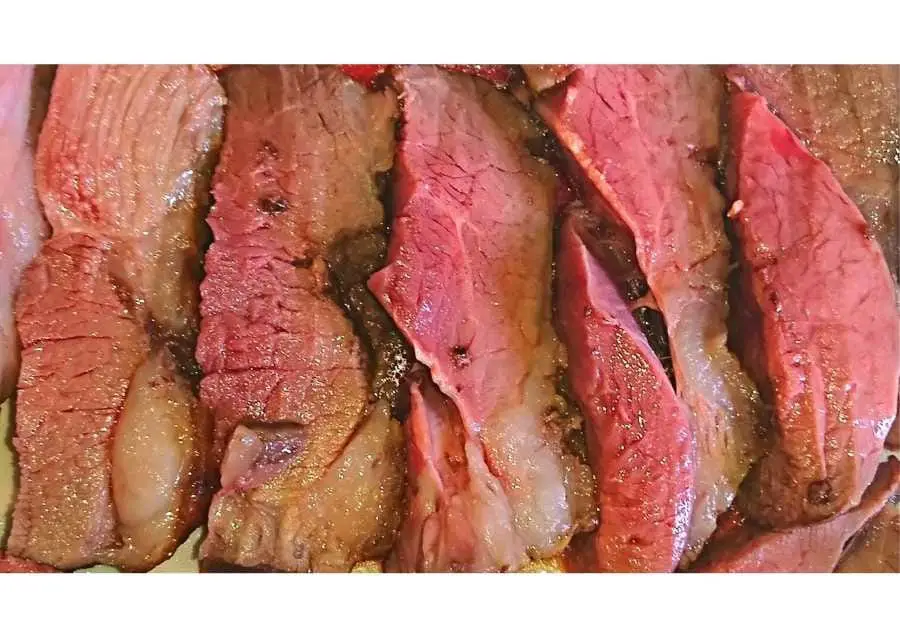
Tender, juicy and flavorful roasted lamb
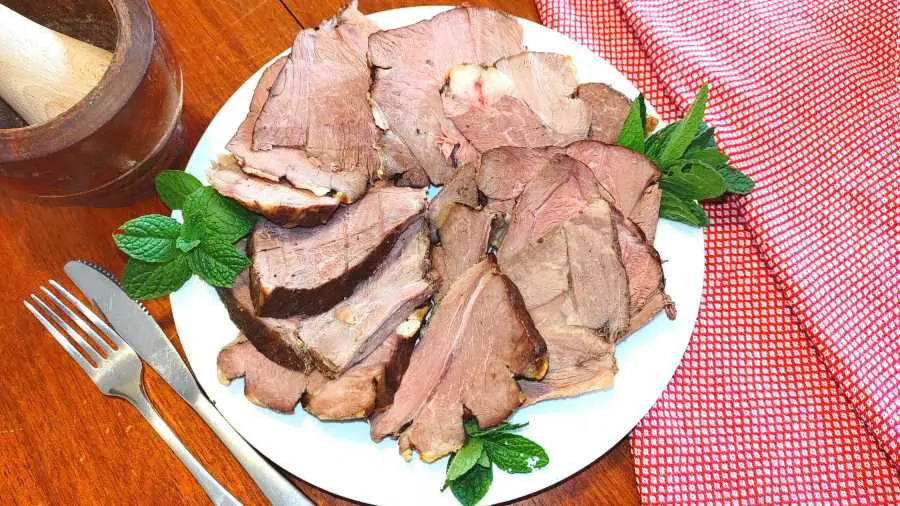
Other recipes you might like to try:
Carnivore Beef Liver Strip Recipe
Carnivore Braised Pork Belly With Eggs
Delicious and Nutritious Carnivore Meatloaf Recipe
References
Nutritional composition of red meat
A review of issues of dietary protein intake in humans
Disclaimer: The information in this post is for reference purposes only and not intended to constitute or replace professional medical advice. Please consult a qualified medical professional before making any changes to your diet or lifestyle.

